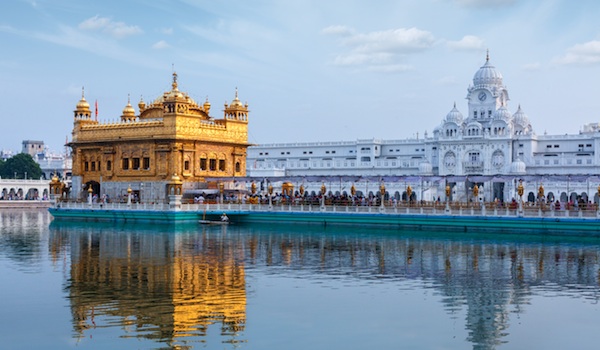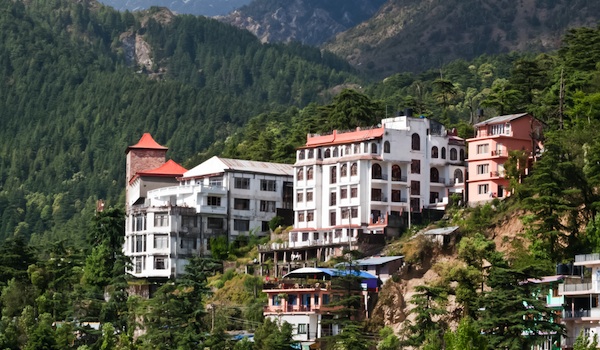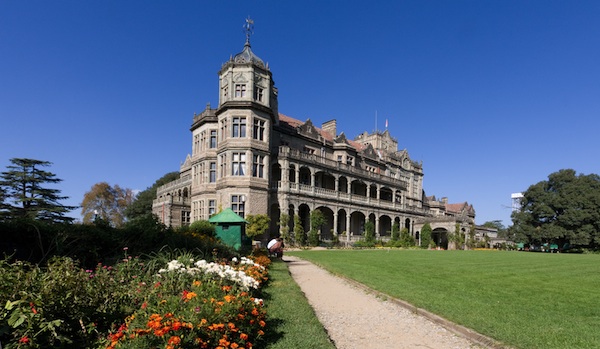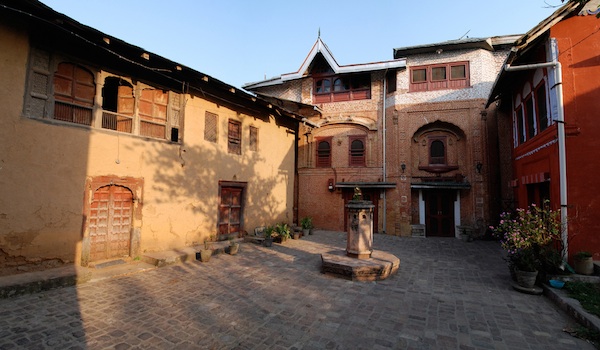Greaves values the feedback of clients who have travelled with us to India. Graham Swift, who visited Northern India with his wife in March, shares the highlights of his Himalayan adventures and time spent visiting the Golden Temple, the center of Sikh pilgrimages.
1. Was this your first vacation to India? If not, where else had you been previously?
This was our fourth vacation to India – and despite the fact that we returned on Sunday, we are already planning our fifth trip. Our first visit was to the ‘Golden Triangle’ the classic Delhi, Jaipur, Udaipur and Agra itinerary, on to which we added a trip to Ranthambore, where we tried to view tigers. A great introduction to the country. The second trip was to Kerala where we spent some time cruising the backwaters in a houseboat. On our third trip we headed back to Delhi and went across to Varanasi and then down to the game reserves of Bandhavgarh and Kanha as on the first trip to Ranthambore all we had managed to see was a lonely tiger paw print. This time we had 13 tiger sightings, five all in one go from the back of an elephant. The elephant safari was marvellous – they go straight into the forest and seem to have a level of understanding with the tigers, so much so that the tigers let them get really close. We had a bit of a nasty moment when as our elephant turned to leave, one of the tigers got to its feet and started stalking after us. It was only after the elephant swung back and fixed it with a menacing look that the tiger sat down and became disinterested.
2. What made you decide on choosing this particular tour of Northern India?
We hadn’t been to this part of India before and wanted to see the north of the country. Who wouldn’t want ot go on Himalayan adventures?
3. You started your trip to India in Delhi. As the bustling modern capital of India, what were your impressions of the city?
Delhi is a fascinating city – it comes in two halves: the old and the new. What is particularly interesting is the way the British planned New Delhi, creating wide open avenues and a tremendous feeling of space. We found that the poverty was a little more obvious in Delhi, as in Mumbai, than elsewhere, but this is probably only because everything is much more concentrated. We stayed at the Imperial Hotel, which was wonderful – the food there was great, especially the breakfast buffet and one evening we ate in the Spice Route restaurant, whose Indian food was amazing. We had a long chat to the chef and at the end of the meal we were presented with a beautiful carved wooden box filled with spices – that was a really lovely touch.

The Golden Temple at Amritsar © F9Photos, Shutterstock.com
4. After Delhi, you headed north to Amritsar. Can you tell us a little about your visit to the temple, it is the most visited building in India, with over 100,000 visitors a day? Did you manage to carry the shrine in the Palki Ceremony?
The six-hour train journey is a must – traveling first class is a real Indian experience, but not much better than being in the guard’s car on a British train. Once we arrived in Amritsar we visited the Golden Temple twice, once in the morning and once in the evening when the whole temple is flood lit and the lights shimmering off the hundreds of kilos of gold that cover the temple is simply stunning. We watched the Palki Ceremony from a distance – you really need to be a Sikh to get involved. Despite the fact that 100,000 people visit the temple in a day, it is the focus of many Sikh pilgrimages, when we arrived in the evening there were only a few thousand people in the queue, but it moves quickly and didn’t take us very long to get in. Once we were in, the temple is large enough that you never feel too crowded and one can walk around freely with head covered and bare feet across the cool, spotlessly clean marble floors.
What was really remarkable was the fact that they feed 10,000 people a day and the process through which they go is very impressive. There is a staple of rice, dal (lentils) and aloo (potatoes) that are ladled onto tin plates – once finished there is an elaborate, and extremely noisy system of cleaning the plates by hurling them around the room and banging them on cauldrons to clean them. All the water bowls are washed using sand. The people they feed are not just the poor but everyone from those in need to local doctors, lawyers and bigwigs.
5. Amritsar is not just about the Golden Temple, what else did you do or see in the city?
Outside of the Golden Temple and the site of the 1919 Jallianwala Bagh massacre there isn’t much to see in Amritsar. When we visited the site of the massacre we felt that the guide had a somewhat revisionist agenda and that his views were being foisted on us. However, we received several requests for photographs with the locals and their children, a warm and friendly atmosphere really.

Dharamsala © OPIS Zagreb, Shutterstock.com
6. Following Amritsar you drove up to Dharamsala – that must have been an incredibly beautiful and winding drive into the mountains. How would you describe your Himalayan adventures?
The road that leads up to Dharamasala is long and winding pushing through dramatic scenery with monasteries plugged, almost impossibly, into the sides of the mountains. Slowly, we snaked up through the foothills into the mountains on increasingly sharp roads. Our driver was cool and collected and not phased by the chaotic traffic that was the same as in Delhi, but with steep drops on one side of the road.
We stayed at the Chonor House hotel, which was gorgeous. Each of the rooms is individually themed and decorated in a Tibetan style – we stayed in the Birds of Tibet Room. In the evening you can sit out on a lovely terrace with a gin and tonic listening to the chanting coming from the monastery near by, mingled with the chorus of the local dogs. The food has a strong Tibetan influence and was delicious, although a Tibetan recipe book might be a little short.
We had a guide to take us around the monasteries, the most impressive of which was the main Tibetan monastery next door to the Dalai Lama’s house. We were able to go inside and look around, however, what struck us is that the monks spend all their time praying and providing a focal point for Tibetan Buddhism in exile and drawing attention to its plight, but we did feel that the monks could do more for the local community.
7. Between Dharamsala and Taragarh you visited several Buddhist monasteries, which was the most impressive?
The most impressive monastery was definitely the main one in Dharamsala, next to the Dalai Lama’s House. We were really impressed though by the ruined fort at Kangra, we were told that the surrounding mountains and cliffs were leveled by hand to make Kangra Fort even more secure and imposing.

Shimla © Wansford Photo, Shutterstock.com
8. In Pragpur and Shimla, how did you spend your time? How was the mountain railway?
We loved Pragpur, we stayed at The Judge’s Court – a wonderful boutique hotel that was run by the Grandson of the original judge, the first to have received a knighthood for his services in India. There wasn’t much to do in the area, a big river, a couple of temples, but the real joy was the village, just five minutes walk away through the hotel’s garden that was clean and simple and extremely atmospheric. In fact the whole area was great and an idyllic climate, you can understand why the British moved into the Himalayan foothills during the hot summer months.
We took the ‘Toy Train’ at Shimla, a narrow gauge railway engineered by the British and snaking along the sides of mountains, over viaducts and through many tunnels. A remarkable feat of engineering. This isn’t just a tourist train, it is used by locals and visitors alike and takes people to the refreshing cool of the British summer retreat of Kandaghat. Shimla itself is Little Britain in the sub-continent – the streets and shops wouldn’t look out of place in a English market town! We had a mixed tour of the Gaiety Theatre, which ended up with a very talkative guide accidentally locking the three of us in one of the rooms at the top of the building, at which he exclaimed “Problematical I am thinking!”

Pragpur © BryceEJohnson, Flickr
9. Where did you tend to eat, did you eat in the hotels or did you explore what was on offer in the cities and which was your most memorable meal?
We tended to eat in hotels, preferring to err on the side of caution than risk picking up a bug. Overall the food was fabulous, we love Indian food anyway so the whole trip was a real treat.
10. If one experience will stick in your mind from your vacation to India, which would it be?
The experience that would have to stick in our mind was walking into the Golden Temple at Amritsar at night – the gold of the temple, offset by the clean white marble of the buildings that surround the lake is extraordinarily powerful. I’m not a religious man, but it was awe-inspiring and we felt incredibly moved.
11. Was this your first time traveling with Greaves India? Would you travel with them again?
This was our third trip with Greaves to India and we would definitely use them again. They have this amazing understanding of India and how the country works. Whatever you need is made available and they really work on all the little things that really make a vacation – the guides were excellent, the drivers reliable, the food and hotel recommendations safe and and luxurious, they are even able to help you jump the long immigration lines at passport control. We just didn’t have to worry about anything when we were away – we could just concentrate on enjoying the vacation and all that India has to offer.
You can find the Delhi, Udaipur, Jaipur and Agra tour in our itinerary; Jewels of India.

